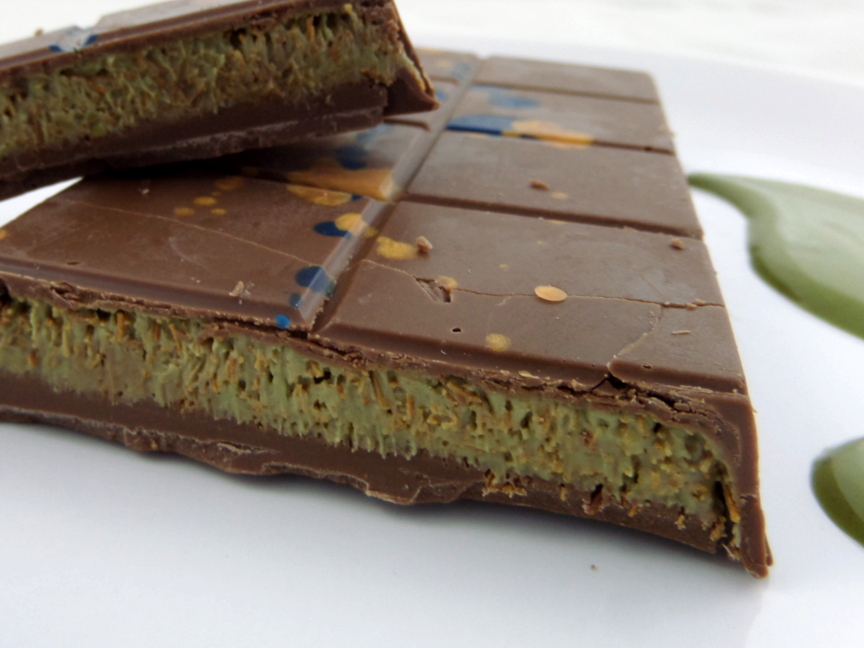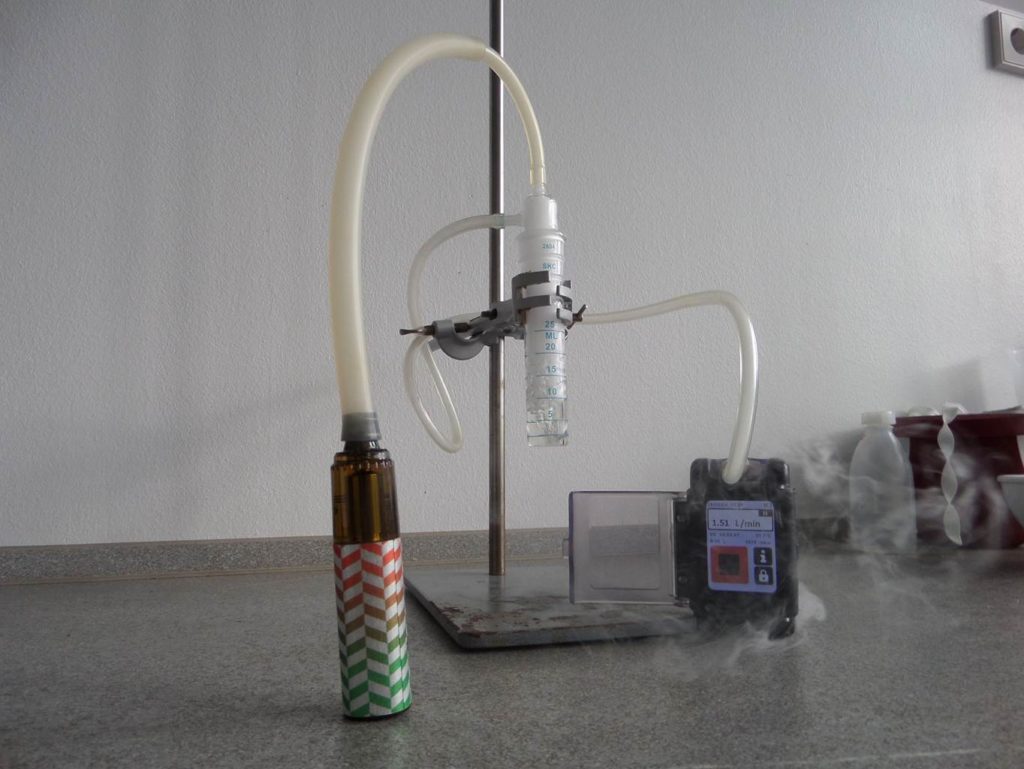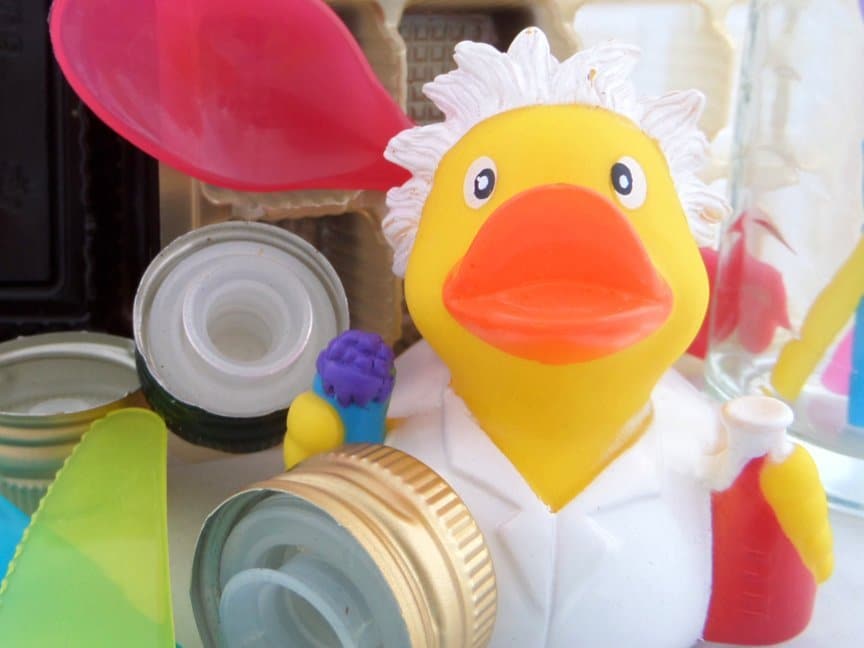Schimmel in der Wohnung – Ursache für gesundheitliche Beschwerden
Schimmel in der Wohnung ist eine sehr ärgerliche Angelegenheit. Er sieht nicht nur unschön aus, sondern ist es auch. Schimmel kann Krankheiten wie Atembeschwerden und sogar Allergien und Asthma auslösen. Insbesondere Kinder sind gefährdet, und sollten von einem Zimmer ferngehalten werden, in dem Schimmelbildung bekannt ist.
Tatsächlich wäre es sogar besser, Kinder von einer befallenen Wohnung fernzuhalten, da sich die gefährlichen Schimmelsporen schnell über die Raumluft verteilen. Eine gewisse Anzahl an Schimmelsporen ist normal und auch ganz natürlich, damit kommt der menschliche Körper problemlos zurecht. Doch sobald beispielsweise eine Wand von Schimmel befallen ist und die Sporenanzahl in der Luft steigt, wird es für Mensch und Tier gefährlich. Der Begriff Schimmelpilz ist ein Oberbegriff unter dem eine Vielzahl verschiedener Arten vereint sind, die noch längst nicht alle erforscht sind. Die Giftstoffe der Schimmelpilze bezeichnet man als Mykotoxine und sie können bereits in geringen Mengen zu gesundheitlichen Problemen führen. Die Mycotoxine begegnen uns u.U. auch in den Lebensmitteln, z.B. in Form von Aflatoxinen in Nüssen und Pistazien. Die Gefahr im Wohnraum geht in der Hauptsache von den Sporen aus, die sich in Windeseile im ganzen Haus verbreiten können, ohne dass man sie sehen oder riechen kann.
Wie kann Schimmel in der Wohnung sicher erkannt werden?
Ob es sich wirklich um einen Schimmelpilz handelt und falls ja, um welchen, kann mit der folgenden Analyse bestimmt werden:
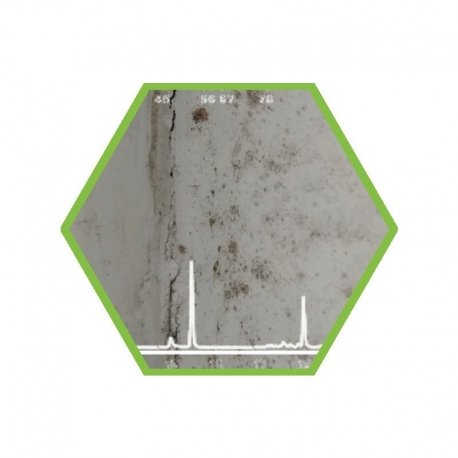 | Schimmelpilz Analyse InnenraumZMMI01 |
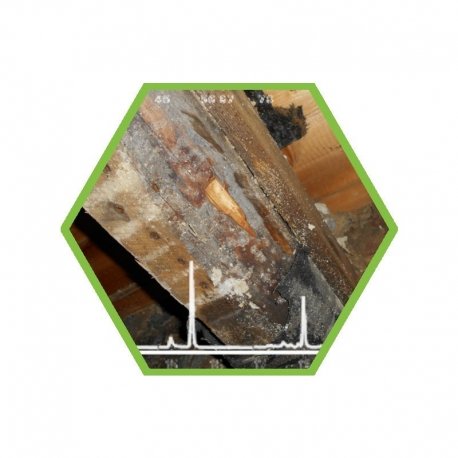 | Gebäudezerstörende Pilze (u.A. Hausschwamm)MGPI1 |
sehr einfache Probenahme
Dazu entnehmen Sie bitte ein Stück Tapete mit dem Befall (5*5cm) oder Sie entnehmen eine Klebestreifen Probe: Dazu verwenden Sie ein durchsichtigen Klebestreifen (Tesa), setzen den Film mit der Klebeseite nach unten auf die befallene Stelle, nehmen ihn wieder ab und kleben ihn auf einen Glas-Objektträger oder falls nicht vorhanden, auf ein Stück durchsichtige Kunststofffolie. An dem Klebestreifen sollten die Pilzsporen haften. Die Untersuchung erfolgt dann mikroskopisch.
 Schimmel vermeiden durch richtiges Lüften
Schimmel vermeiden durch richtiges Lüften
Wer Schimmel in der Wohnung grundsätzlich vermeiden möchte, der muss auf korrektes Lüften achten. Das bedeutet: großes Stoßlüften, nach Möglichkeit mit Durchzug, anstatt permanent das Fenster auf Kipp zu haben.  Der Hintergrund dazu ist folgender: Schimmelpilze lieben Feuchtigkeit. Feuchtigkeit, die wir permanent produzieren. Nicht nur beim Kochen, Duschen und Baden, sondern auch beim Atmen. In einem 4-Personen Haushalt kommen in etwa 12 Liter pro Tag zusammen, und wenn diese Masse an Feuchtigkeit nicht seinen Weg nach draußen findet, dann bildet sie früher oder später den perfekten Nährboden für Schimmel. Besonders gefährdet sind Küche, Bad und die Räume in denen Wäsche getrocknet wird. Drei bis vier Mal intensiv durchlüften pro Tag sollte schon sein, besonders nach dem Kochen, Duschen und Baden. Wenn es möglich ist, richten Sie einen Durchzug ein indem Sie auf den gegenüberliegenden Seiten der Wohnung/des Hauses gleichzeitig ein Fenster oder eine Tür öffnen.
Der Hintergrund dazu ist folgender: Schimmelpilze lieben Feuchtigkeit. Feuchtigkeit, die wir permanent produzieren. Nicht nur beim Kochen, Duschen und Baden, sondern auch beim Atmen. In einem 4-Personen Haushalt kommen in etwa 12 Liter pro Tag zusammen, und wenn diese Masse an Feuchtigkeit nicht seinen Weg nach draußen findet, dann bildet sie früher oder später den perfekten Nährboden für Schimmel. Besonders gefährdet sind Küche, Bad und die Räume in denen Wäsche getrocknet wird. Drei bis vier Mal intensiv durchlüften pro Tag sollte schon sein, besonders nach dem Kochen, Duschen und Baden. Wenn es möglich ist, richten Sie einen Durchzug ein indem Sie auf den gegenüberliegenden Seiten der Wohnung/des Hauses gleichzeitig ein Fenster oder eine Tür öffnen.
 Schimmel hinter Möbel vorbeugen
Schimmel hinter Möbel vorbeugen
Ein beliebter Ort für Schimmel, wo er auch lange unentdeckt bleiben kann, sind die Wände hinter Möbeln, oder die Rückwände der Möbeln selbst. Der Grund dafür liegt darin, dass selbst bei großzügiger Lüftung beispielsweise hinter Schränken kein Luftaustausch stattfindet. Diese Schimmelbildung hinter den Möbeln lässt sich ganz einfach vermeiden, indem man die Möbel mindestens 5 cm – 10 cm von der Wand entfernt aufstellt.
 Mit der richtigen Raumtemperatur Schimmel vermeiden
Mit der richtigen Raumtemperatur Schimmel vermeiden
 Um eine Schimmelbildung zu vermeiden, ist es wichtig, dass die Temperatur in den Zimmern stimmt. Die folgende Tabelle gibt Auskunft über die Idealtemperaturen der einzelnen Räume:
Um eine Schimmelbildung zu vermeiden, ist es wichtig, dass die Temperatur in den Zimmern stimmt. Die folgende Tabelle gibt Auskunft über die Idealtemperaturen der einzelnen Räume:
| Raum | Ideale Temperatur |
| Wohnräume & Arbeitsräume | 20 °C |
| Schlafzimmer | 16 – 18 °C |
| Kinderzimmer | 20 – 22 °C |
| Küche | 18 °C |
| Badezimmer | 23 °C |
| Keller | 10 – 15 °C |
Wichtig ist also, die Räume nicht auskühlen zu lassen, wie es sehr schnell passiert, wenn man in den kalten Monaten dauerhaft das Fenster geöffnet hat. Wie bereits unter Punkt 1 beschrieben, ist kurzes Stoßlüften mit Durchzug die beste Variante. Nach dem Stoßlüften wird sich das Zimmer sehr schnell wieder aufwärmen, da die Wärme noch in den Wänden, Böden, Decken und Einrichtungsgegenständen gespeichert ist und jetzt wieder in die Raumluft abgegeben wird. Bei langem Lüften hingegen würden die Wände usw. mit ausgekühlt, weshalb für ein erneutes Erwärmen des Zimmers viel mehr Energie benötigt wird. Die Stoßlüftung beugt also nicht nur Schimmel vor, sondern ist auch kostengünstiger und umweltschonender.
 Schimmel die Grundlage entziehen: Luftfeuchtigkeit prüfen
Schimmel die Grundlage entziehen: Luftfeuchtigkeit prüfen
 Ebenfalls ein sehr wichtiger Faktor für die Schimmelbildung ist die relative Luftfeuchtigkeit im Raum. Zunächst einmal: welche Information versteckt sich hinter dem Begriff „relative Luftfeuchtigkeit“? Die Luft kann nur eine bestimmte Menge Wasserdampf in sich aufnehmen, und diese Menge ist abhängig von der Temperatur. Ein Kubikmeter Luft mit einer Temperatur von 0 Grad Celsius kann beispielsweise 5 Gramm Wasserdampf aufnehmen. Die Menge steigt mit der Temperatur an, und so kann ein Kubikmeter Luft bei 30 Grad Celsius bereits 30 Gramm Wasserdampf aufnehmen. Die „relative Luftfeuchtigkeit“ bezieht sich immer darauf, zu wieviel Prozent die Luft sozusagen ausgelastet (also gesättigt) ist. Wenn sich in einem Kubikmeter Luft bei 30 Grad Celsius 30 Gramm Wasser befinden, dann ist die relative Luftfeuchtigkeit 100%. Bei 15 Gramm Wasser dementsprechend 50%. Wenn die Luft gesättigt ist, kann der gasförmige Zustand des Wassers nicht gehalten werden und es bilden sich Flüssigkeitstropfen. Diese Kondensation, aber auch schon relative Luftfeuchtigkeitswerte von über 70%, begünstigen Schimmel extrem, ab 80% ist er praktisch unvermeidbar. Die genauen Werte, die Sie der nachfolgenden Tabelle entnehmen können, sollten Sie für die einzelnen Räume einhalten.
Ebenfalls ein sehr wichtiger Faktor für die Schimmelbildung ist die relative Luftfeuchtigkeit im Raum. Zunächst einmal: welche Information versteckt sich hinter dem Begriff „relative Luftfeuchtigkeit“? Die Luft kann nur eine bestimmte Menge Wasserdampf in sich aufnehmen, und diese Menge ist abhängig von der Temperatur. Ein Kubikmeter Luft mit einer Temperatur von 0 Grad Celsius kann beispielsweise 5 Gramm Wasserdampf aufnehmen. Die Menge steigt mit der Temperatur an, und so kann ein Kubikmeter Luft bei 30 Grad Celsius bereits 30 Gramm Wasserdampf aufnehmen. Die „relative Luftfeuchtigkeit“ bezieht sich immer darauf, zu wieviel Prozent die Luft sozusagen ausgelastet (also gesättigt) ist. Wenn sich in einem Kubikmeter Luft bei 30 Grad Celsius 30 Gramm Wasser befinden, dann ist die relative Luftfeuchtigkeit 100%. Bei 15 Gramm Wasser dementsprechend 50%. Wenn die Luft gesättigt ist, kann der gasförmige Zustand des Wassers nicht gehalten werden und es bilden sich Flüssigkeitstropfen. Diese Kondensation, aber auch schon relative Luftfeuchtigkeitswerte von über 70%, begünstigen Schimmel extrem, ab 80% ist er praktisch unvermeidbar. Die genauen Werte, die Sie der nachfolgenden Tabelle entnehmen können, sollten Sie für die einzelnen Räume einhalten.
| Raum | Ideale rel. Luftfeuchtigkeit |
| Wohnräume & Arbeitsräume | 40% – 60% |
| Schlafzimmer | 40% – 60% |
| Kinderzimmer | 40% – 60% |
| Küche | 50% – 60% |
| Badezimmer | 50% – 70% |
| Keller | 50% – 75% |
Für die Messung der relativen Luftfeuchtigkeit benötigen Sie ein Hygrometer. Damit können Sie zu jedem Zeitpunkt die relative Luftfeuchte in den Wohnräumen ablesen.
 Luftfeuchtigkeit im Zimmer senken
Luftfeuchtigkeit im Zimmer senken
Wenn die Luftfeuchtigkeit im Zimmer zu hoch ist, gibt es mehrere Möglichkeiten, diesen zu senken.
- Gut durchlüften: wie bereits beschrieben sollte regelmäßiges Durchlüften eigentlich vollkommen ausreichen, um die Luftfeuchtigkeit auf ein annehmbares Maß zu senken. Gibt es kein Fenster im Zimmer, so kann man dennoch durch offene Türen die Feuchtigkeit über andere Zimmer abführen.
- Hausmittel (Salz, Reis und Katzenstreu): ein sehr kostengünstiges Hausmittel zur Luftentfeuchtung stellen Salz, Katzenstreu und Reis dar. Finden Sie mit dem Hygrometer heraus, an welchen Stellen des Raumes die Luftfeuchtigkeit besonders hoch ist, und stellen Sie dort kleine Behältnisse mit handelsüblichem Speisesalz, Katzenstreu oder Reis auf. Feuchtigkeit aus der Luft wird davon aufgesogen.
- Luftentfeuchter: wer breit ist, etwas Geld zu investieren, der kann sich auch einen elektrischen Luftentfeuchter kaufen. Für kleinere Räume um die 20 m² reichen hier Geräte um die 100 €, die um die 50 Watt verbrauchen. Bei größeren Räumen muss man schon etwas tiefer in die Tasche greifen – nicht nur der Anschaffungspreis ist mit ca. 300 € deutlich höher, auch der Stromverbrauch liegt mit ca. 150 Watt dreimal höher als die kleineren Kompaktgeräte. Wenn das Lüften und die Schälchen mit Katzenstreu oder Salz nicht ausreichen, dann ist ein elektrischer Luftentfeuchter aber immer noch die deutlich bessere Option als sich einer Schimmel Exposition auszusetzen. Übrigens: die im Handel angebotenen Luftentfeuchter ohne Strombetrieb kann man sich sparen, da sie grundsätzlich nichts anderes sind als die Haushaltsmittel. Hier wird zwar oftmals ein etwas anderes Material zum Aufsaugen der Feuchtigkeit verwendet, allerdings ist das nicht viel effektiver als Salz und Katzenstreu, dafür aber deutlich teurer.
- Dusche trocken wischen: im Bad kann man die Schimmelgefahr vermindern, indem man die Fliesen bzw. Wände der Dusche nach dem Duschgang mit einem Fensterwischer abwischt. Die Flüssigkeitstropfen, die auf diese Weise direkt im Abfluss landen, werden nicht mehr verdunsten und somit auch nicht die Raumfeuchte erhöhen. Zusätzlich kann man die besonders gefährdeten Stellen, wie z.B. die Fugen, desinfizieren. Hier bietet sich Apfelessig an. Am einfachsten und schnellsten erledigt man das, indem man den Apfelessig mit einer Sprühflasche auf die gefährdeten Stellen sprüht – ein Nachwischen ist nicht notwendig. Achtung: Essig darf nicht auf kalkhaltigen Materialien wie z.B. Marmor angewendet werden.
 Luftfeuchtigkeit erhöhen
Luftfeuchtigkeit erhöhen
Auch bei zu niedriger Luftfeuchtigkeit ist es wichtig, Maßnahmen zu ergreifen um die Luftfeuchtigkeit auf das richtige Maß zu bringen.
- Gut durchlüften: der einfachste Weg, die Luftfeuchte ins Optimum zu bringen, besteht auch hier darin, mit Durchzug durchzulüften. .
- Luftfeuchtigkeit anderer Räume nutzen: wenn sich ein Raum mit hoher Luftfeuchtigkeit in der Nähe befindet, beispielsweise ein Badezimmer, kann man die Luftfeuchte dieses Raumes einfach in das trockene Zimmer umleiten. Einfach nach dem Duschen oder Baden die Türen offen stehen lassen. Die Luftfeuchtigkeit wird sich dann gleichmäßig in den Räumen verteilen. Dabei aber unbedingt darauf achten, dass sie nicht zu hoch ist, und im Zweifelsfall noch ein Fenster zusätzlich öffnen.
- Bestimmte Zimmerpflanzen: mit Zimmerpflanzen, die sehr viel Wasser benötigen, kann man die Luftfeuchtigkeit ebenfalls erhöhen. Folgende Pflanzen sind z.B. dafür geeignet:
| Gerbera |  |
| Arecapalme |  |
| Schwertfarn „Bostoniensis“ |  |
| Papyrus |  |
| Spathiphyllum |  |
- Wäsche trocknen: wenn der trockene Raum warm genug ist, dann kann man seine frisch gewaschene Wäsche dort zum Trocknen aufhängen. Da hierbei besonders viel Feuchtigkeit abgegeben wird, ist ein prüfender Blick auf das Hygrometer umso wichtiger.
- Raumbefeuchter: erst wenn all die anderen Maßnahmen bei Ihnen nicht helfen, sollten Sie zu einem Raumbefeuchter greifen. Der Grund, weshalb das die letzte Wahl ist, ist die Tatsache, dass viele Raumbefeuchter die Verbreitung von Keimen begünstigen. Sie haben meist einen Wassertank, der erhitzt wird, und bieten dabei die perfekte Lebensgrundlage für Keime. Sie vermehren sich dort im Wasser, und werden dann überall verteilt. Deshalb ist davon generell eher abzuraten.
 Schimmel selbst entfernen
Schimmel selbst entfernen
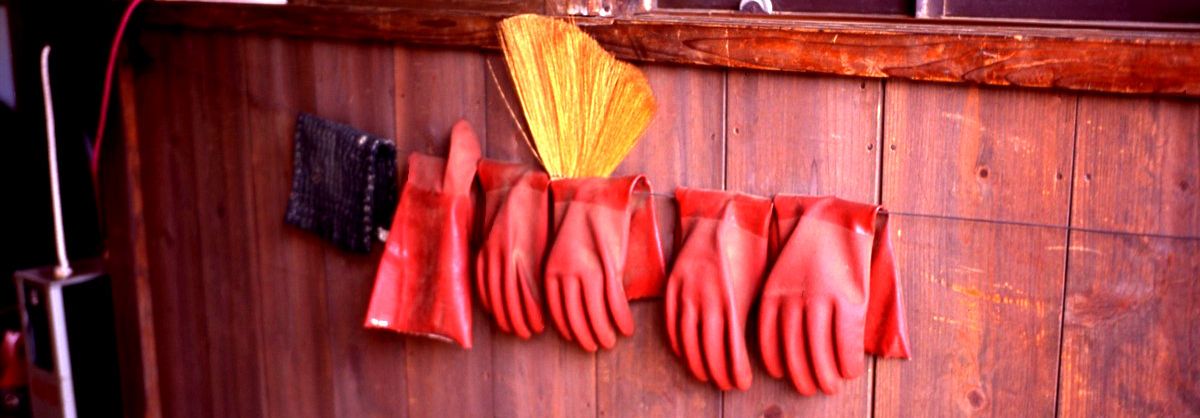 Neuer Schimmel, der eine Größe von einem Quadratmeter nicht überschreitet, kann recht einfach entfernt werden. Zwei Dinge sind dabei jedoch unbedingt zu beachten: der Schimmel darf nur oberflächlich vorhanden sein! Wenn er tiefer sitzt, beispielsweise durch einen Wasserschaden oder ein defektes Rohr, dann sollte zwingend ein Fachmann beauftragt werden. Und der zweite Punkt ist, dass für ausreichenden Selbstschutz gesorgt werden muss:
Neuer Schimmel, der eine Größe von einem Quadratmeter nicht überschreitet, kann recht einfach entfernt werden. Zwei Dinge sind dabei jedoch unbedingt zu beachten: der Schimmel darf nur oberflächlich vorhanden sein! Wenn er tiefer sitzt, beispielsweise durch einen Wasserschaden oder ein defektes Rohr, dann sollte zwingend ein Fachmann beauftragt werden. Und der zweite Punkt ist, dass für ausreichenden Selbstschutz gesorgt werden muss:
- eine P2 Atemmaske um keine Sporen einzuatmen
- eine Schutzbrille gegen Augenreizungen
- Gummihandschuhe um allergischen Reaktionen bei Hautkontakt vorzubeugen
Für die Behandlung von oberflächlichem Schimmel bieten sich zwei Hausmittel an: Essigessenz und 70% Alkohol bzw. Brennspiritus. Man sollte vor der Behandlung der Oberfläche immer an einer unauffälligen Stelle testen, ob das Material die Behandlung verträgt. Bunte Tapeten beispielsweise verfärben sich sehr gerne.
 Essigessenz gegen Schimmel
Essigessenz gegen Schimmel
Geben Sie die Essigessenz auf einen Lappen oder Schwamm und wischen Sie den Schimmel damit weg. Der niedrige pH-Wert der Essigessenz bekämpft nachhaltig auf glatten Oberflächen, da die meisten Schimmel Arten keinen niedrigen pH-Wert vertragen. Danach noch einmal feucht nachwischen. Bei kalkhaltigem Material (Marmor) funktioniert das allerdings nicht, da die Essigsäure mit dem Kalk reagiert und das Material auflöst. Diese Reaktion können Sie gut beim Entkalken Ihres Wasserkochers beobachten. Den Lappen bzw. Schwamm hinterher über den Hausmüll entsorgen. Es ist unbedingt für eine ausreichende Belüftung der Räume zu sorgen, da Essigessenz die Atemwege reizen kann.
 Alkohol und Brennspiritus als Schimmelvernichter
Alkohol und Brennspiritus als Schimmelvernichter
Alkohole mit 70% Alkoholgehalt oder auch Brennspiritus funktionieren auch sehr gut als Schimmelentferner. Genau wie beim Essig einfach die befallene Stelle damit einreiben. Im Unterschied zum Essig wirkt Alkohol jedoch nicht direkt schädlich auf den Schimmelpilz, sondern entzieht ihm lediglich die Feuchtigkeit und somit die Nahrungsgrundlage. Deshalb muss man diese Behandlung wiederholen. Der Alkoholgehalt sollte auch nicht zu hoch sein, da er sich ansonsten zu schnell verflüchtigt. 70% ist hier ein guter Kompromiss. Den Lappen bzw. Schwamm hinterher über den Hausmüll entsorgen. Es ist unbedingt für eine ausreichende Belüftung der Räume zu sorgen, da Alkohol/Brennspiritus nicht über längere Zeit eingeatmet werden sollte. Es gibt noch zwei weitere Möglichkeiten, Schimmel zu beseitigen. Beide Varianten sind mit Substanzen verbunden, die man auf keinen Fall direkt berühren oder einatmen sollte.
 Schimmelbekämpfung mit Chlor
Schimmelbekämpfung mit Chlor
Jeder kennt den Geruch aus dem Hallen- oder Freibad, wo Chlor eingesetzt wird, um das Badewasser frei von Keimen zu halten. Viele handelsübliche Antischimmelmittel basieren auf Chlor bzw. chlorähnlichen Substanzen, allerdings sollte man sie, wenn überhaupt, nur im Bad anwenden, und anschließend gut lüften. Chlordämpfe sind giftig, weshalb sie nicht in der Küche, im Schlafzimmer oder sonstigen Wohnräumen, in denen man sich länger aufhält verwendet werden sollten. Für Tapeten und Textilien ist Chlor grundsätzlich ungeeignet, da es meist zu Entfärbungen führt.
 Wasserstoffperoxid gegen Schimmel einsetzen
Wasserstoffperoxid gegen Schimmel einsetzen
Mit Wasserstoffperoxid (H2O2) kann man sich nicht nur die Haare bleichen oder den Schwimmpool desinfizieren, sondern man kann eine mindestens 5%ige Lösung auch zur Bekämpfung von Schimmel verwenden. Bei der Anwendung sollte man natürlich Schutzkleidung tragen, und dafür sorgen, dass der Raum gut durchlüftet wird. Der zu behandelnde Untergrund muss trocken sein. Notfalls kann man hier mit einem Fön nachhelfen. Durch die desinfizierende Wirkung werden sowohl aktive Pilzzellen als auch die Konidien, also Quellen für die Sporen, abgetötet. Erhältlich ist Wasserstoffperoxid im Baumarkt oder in der Apotheke. Auch im Internet kann man problemlos Lösungen bestellen, man sollte eben nur darauf achten, dass der H2O2 Anteil mindestens 5% beträgt, da die Wirkung sonst zu schwach ist.
 Schimmel von Fachkräften entfernen lassen
Schimmel von Fachkräften entfernen lassen
 Generell gilt: ist die von Schimmel befallene Fläche größer als 1 m², dann sollte auf jeden Fall eine Fachfirma zu Rate gezogen werden. Bei einem Befall größer als 1 m² liegt die Wahrscheinlichkeit sehr hoch, dass der Schimmel bereits tief in das Gemäuer eingedrungen ist. Die Behandlung mit den oben beschriebenen Hausmitteln mit anschließendem Abwischen reicht hier nicht mehr aus – man setzt sich nur unnötig einer gesundheitlichen Gefahr aus wenn man den Schimmel wegwischt, und nach der Behandlung wächst er aus den Tiefen des Gemäuers wieder nach. Deshalb muss die Wand von einer Fachfirma mit der entsprechenden Ausrüstung aufgestemmt und entsorgt werden. Die Kosten dafür trägt i.d.R. der Eigentümer bzw. Vermieter, es sei denn der Vermieter kann beweisen, dass der Schimmel durch ein Fehlverhalten des Mieters verursacht wurde. Dazu muss er den eigenen Verantwortungsbereich (Baumängel usw.) nachweisbar ausgrenzen. Als Mieter kann man sich direkt an den Vermieter wenden, da er für die Organisation der Schimmelentfernung verantwortlich ist. Sollte er seiner Verantwortlichkeit nicht nachkommen, kann das ein Grund für eine Mietminderung sein. Dabei sollte man sich aber wirklich sicher sein, dass der Schimmel nicht aus eigenem Verschulden zustande gekommen ist, sondern durch schlechte Dämmung, undichte Rohre oder sonstige Mängel des Gebäudes verursacht wurde. Wer durch falsches Lüften Schimmel bekommt, der hat keinen Anspruch auf Mietminderung, es sei denn das falsche Lüften diente zum Ausgleich eines Baumangels. Mit der folgenden Analyse kann bestimmt werden ob es sich um einen Schimmelpilz handelt und falls ja, um welchen:
Generell gilt: ist die von Schimmel befallene Fläche größer als 1 m², dann sollte auf jeden Fall eine Fachfirma zu Rate gezogen werden. Bei einem Befall größer als 1 m² liegt die Wahrscheinlichkeit sehr hoch, dass der Schimmel bereits tief in das Gemäuer eingedrungen ist. Die Behandlung mit den oben beschriebenen Hausmitteln mit anschließendem Abwischen reicht hier nicht mehr aus – man setzt sich nur unnötig einer gesundheitlichen Gefahr aus wenn man den Schimmel wegwischt, und nach der Behandlung wächst er aus den Tiefen des Gemäuers wieder nach. Deshalb muss die Wand von einer Fachfirma mit der entsprechenden Ausrüstung aufgestemmt und entsorgt werden. Die Kosten dafür trägt i.d.R. der Eigentümer bzw. Vermieter, es sei denn der Vermieter kann beweisen, dass der Schimmel durch ein Fehlverhalten des Mieters verursacht wurde. Dazu muss er den eigenen Verantwortungsbereich (Baumängel usw.) nachweisbar ausgrenzen. Als Mieter kann man sich direkt an den Vermieter wenden, da er für die Organisation der Schimmelentfernung verantwortlich ist. Sollte er seiner Verantwortlichkeit nicht nachkommen, kann das ein Grund für eine Mietminderung sein. Dabei sollte man sich aber wirklich sicher sein, dass der Schimmel nicht aus eigenem Verschulden zustande gekommen ist, sondern durch schlechte Dämmung, undichte Rohre oder sonstige Mängel des Gebäudes verursacht wurde. Wer durch falsches Lüften Schimmel bekommt, der hat keinen Anspruch auf Mietminderung, es sei denn das falsche Lüften diente zum Ausgleich eines Baumangels. Mit der folgenden Analyse kann bestimmt werden ob es sich um einen Schimmelpilz handelt und falls ja, um welchen:
 | Schimmelpilz Analyse InnenraumZMMI01 |
 | Gebäudezerstörende Pilze (u.A. Hausschwamm)MGPI1 |
Bei Fragen zu Schadstoffen beraten wir Sie gerne: Kontak: mail@my-lab.com Tel.: 030 233215800
Bildnachweise
- Titelbild | Quelle: T. Anderson / flickr | CC BY 2.0 | Modifiziert von my-lab International
- Blauschimmelkäse | Quelle: homo_sapiens / flickr | CC BY-NC 2.0 | Modifiziert von my-lab International
- Offenes Fenster | Quelle: storebukkebruse / flickr | CC BY 2.0 | Modifiziert von my-lab International
- Thermometer | Quelle: Ged Carroll / flickr | CC BY 2.0 | Modifiziert von my-lab International
- Hygrometer | Quelle: Brian O’Connor / flickr | CC BY-NC-SA 2.0 | Modifiziert von my-lab International
- Arecapalme | Quelle: Maja Dumat / flickr | CC BY 2.0 | Modifiziert von my-lab International
- Gerbera | Quelle: Nicole Vaughan / flickr | CC BY-NC 2.0 | Modifiziert von my-lab International
- Papyrus | Quelle: Alan Teo / flickr | CC BY-NC-SA 2.0 | Modifiziert von my-lab International
- Spathiphyllum | Quelle: Snapshooter46 / flickr | CC BY-NC-SA 2.0 | Modifiziert von my-lab International
- Gummihandschuhe | Quelle: nao-cha / flickr | CC BY-NC-SA 2.0 | Modifiziert von my-lab International
- Männer in Schutzanzügen | Quelle: U.S. Departement of Agriculture / flickr | CC BY 2.0 | Modifiziert von my-lab International

